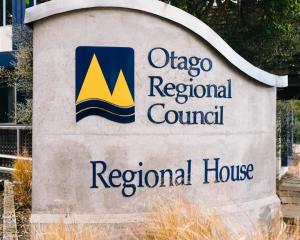
The design features also include high build UV and spot UV design elements and, in a world first, the honey will be sold in a cylindrical jar.
In total the jar has eleven separate consumer security and anti-counterfeit measures.
Midland Apiaries international brand manager of PURITI Adam Boot said about a half a million dollars had been invested by the company from design to implementation.
It was considered a worthwhile investment.
Counterfeits were a threat to the country's reputation as an exporter of high-quality honey, including manuka honey, which was internationally identified as a New Zealand product, Mr Boot said.
manuka honey had been highly valued since the early 1980s, but there were efforts to adulterate and counterfeit it.
''The amount of questionable manuka honey on the market is vast,'' he said.
It was behind the company's push for an easily identifiable product, with accurate information for the consumer on the packaging.
''We are trying to be what we say we are,'' he said.
Among its features the manuka honey jar has a unique lid with a thick anti-tamper seal, and a distinctly different visual appearance, unique to the product.
It also had a tear strip for additional consumer security.
Mr Boot said Midlands Apiaries wanted to make it harder for others to copy their product.
It was estimated manuka honey exported from New Zealand was worth about $180million.
It could double in a decade if the Manuka brand was protected and added value kept onshore.
KEEPING ITS VALUE
Ministry for Primary Industries (MPI) have acknowledged the significant value of manuka honey and its consistent growth as a high-value export for New Zealand.
They were working with the industry to keep the integrity of the product, sold as a food.
''Our reputation for honey production and export rests on the integrity of our products and the credibility of our systems,'' MPI states on its website.
In December 2017, MPI finalised a robust and sophisticated Manuka Honey Science Definition - a scientific test to authenticate whether or not a particular honey was New Zealand manuka honey.
At the time, MPI said the definition was essential to maintain New Zealand's premium position in overseas markets.
''It will also help the continued growth of our export honey industry.''
MPI was now seeking feedback on options for manuka honey sold in New Zealand.
As all exported manuka honey needed to meet the manuka honey science definition to test its authenicity, MPI were considering whether to apply the same same science definition to manuka honey sold within New Zealand.
They were calling for feedback on the issue by September 17, and had arranged public meetings around the country.
It was a move Midland Apiaries were 100% behind.
''Real manuka honey must be harvested, tested, certified and packed in New Zealand,'' Mr Boot said.
Mr Boot said the Midland Apiaries' product sold in New Zealand was as good as the product they exported, and was labelled with both MGO and UMF grading systems, recognised internationally within the industry.
''The idea was to cut through the smoke, mirrors and mystery and provide the consumer with knowledge and understanding of manuka.
''We wanted to give the consumer confidence in their manuka purchase, and someone had to do it.
''We were uncomfortable with the quality choice available to the consumer and the lack of protection provided against counterfeit and fake products,'' he said.
''We want the consumer to know they have a choice they can trust every time.''
THE DEFINITION
The manuka honey definition was made up of a combination of five attributes (four chemicals from nectar and one DNA marker from manuka pollen).
It allowed the industry to separate manuka honey from other honey types and identify it as either monofloral or multifloral manuka honey - depending on the level of manuka present.
MPI had increased the required level of one of the chemicals found in manuka plants, which made it harder to attempt blending different types of honey with manuka honey to meet the definition.
However, the new standard only applied to exported jars, and not to manuka honey sold in NZ.
Export regulations also allow bulk honey to be exported without meeting new MPI guidelines.
Mr Boot said the world over, most brands used simple labels with a similar square-shaped jar, which made the counterfeit issue harder to stop.
He said international labelling regulations differed, grading systems varied, and purity standards fluctuated when bulk manuka honey was packed into jars overseas.















